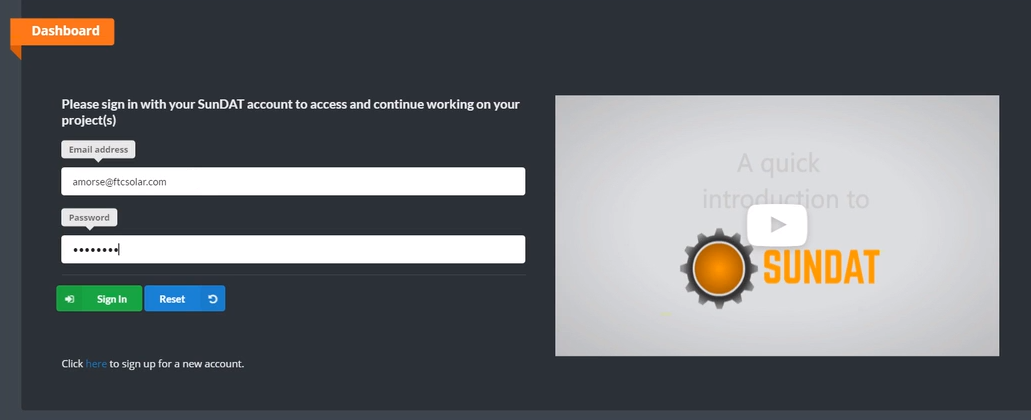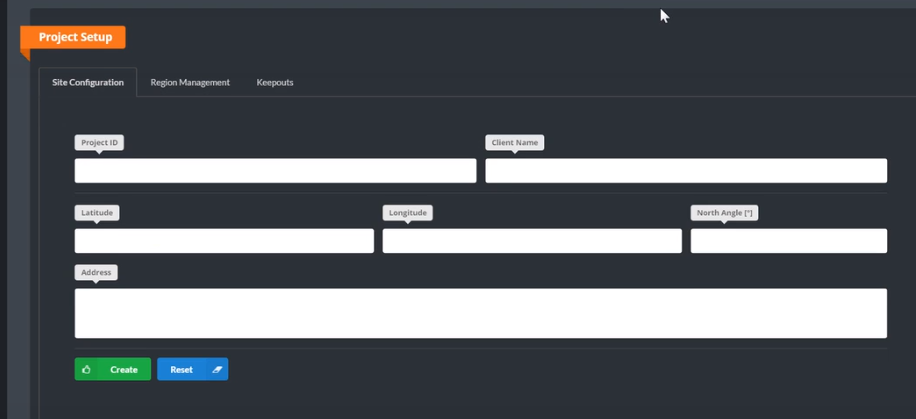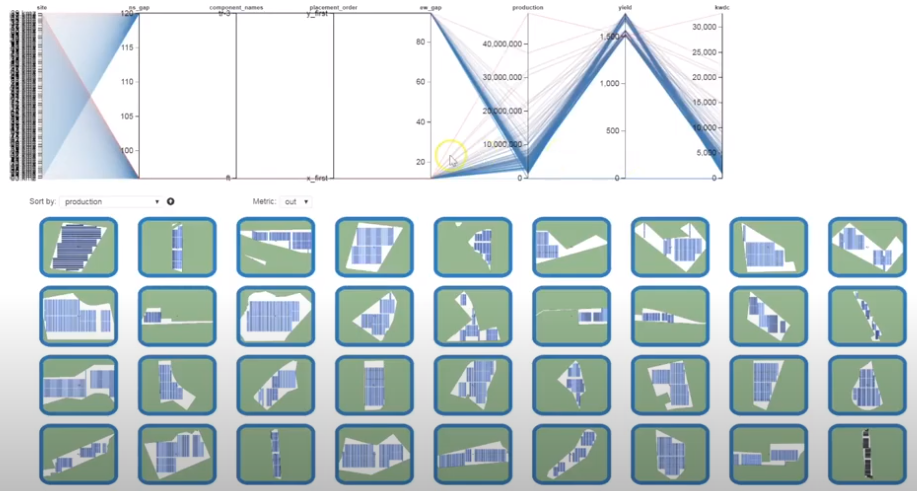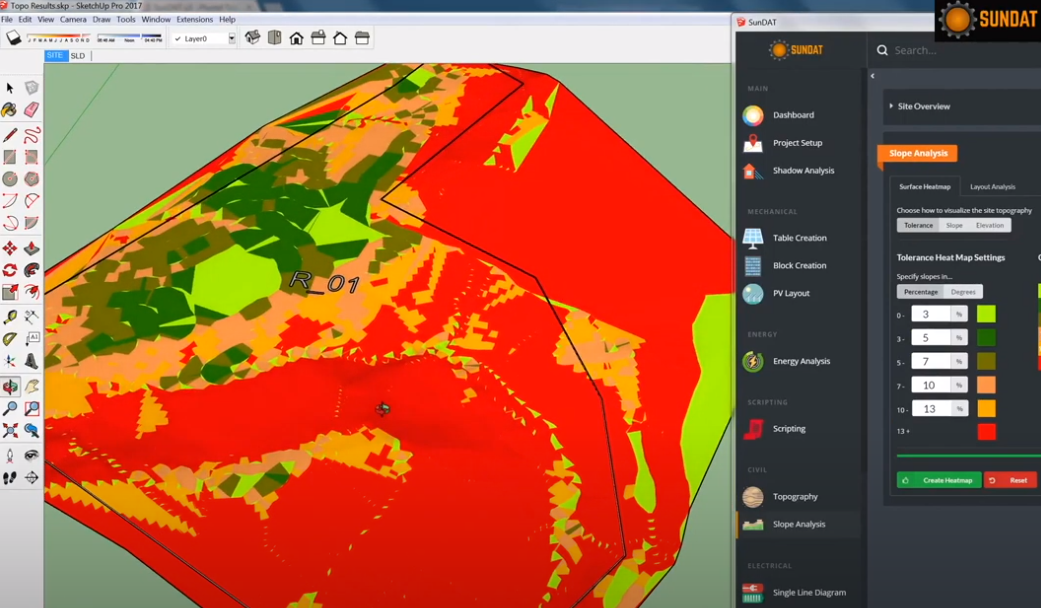SunDAT Review
- SunDAT is the innovative solar software for designing and modeling PV systems and renewable energy projects. SunDAT is the special-purpose plugin developed by the FTC Solar team. It is used with the SketchUp 3D free and PRO software to enable designers and solar engineers to create the automated design and undertake various optimizations of the existing photovoltaic systems.

SunDAT gives the opportunity to play various design scenarios with its range of available options. The designer can try scripting to record all the undertaken steps during the designing process. Among the key features of the SunDAT solar software plugin, Layout Modeling, Energy Modeling, and Topography Analysis should be taken into consideration.
Let’s take a closer look at the SunDAT designing options that allow users to optimize their system design, reduce installation costs, and meet customers’ requirements.
Project Creation

It is worth noting that SunDAT is an extension of SketchUp designing and modeling software. That is why project creation is impossible without a SketchUp subscription. A trial activation is also possible for new users. Note that the free SketchUp software (web version) is not compatible with the SunDAT plugin.
The SunDAT extension should be downloaded for SketchUp software beforehand. In the menu of extensions (the top menu on the home page) find the SunDAT plugin. You will see the sign-in window for new users. Specify your email address and a password for your personal SunDAT profile. Click Sign in to finish your registration. The Project Setup window appears next.

The user needs to specify the geolocation of the object to proceed with the designing options and other changes. It is possible to import KMZ files and start with the project.
SunDAT Designing Options

The main designing options are presented to the left in the main menu of the SunDAT solar software plugin. The user can start with project setup and continue with shadow analysis, topography, scripting, and other available designing tools.
Module & Inverter Design

There is a table and blocks menu to start the design process. It is possible to select the module layout from the wide list of patterns presented for the site of the user’s interest. Use SketchUp tools to specify boundaries and obstructions beforehand. The user can identify layout regions and review local design conditions. Among the options for automated module layout and inverter design are:
- Azimuth;
- Start point;
- Target system size;
- Space type;
- Sight boundaries;
- Setbacks, obstructions, keep-outs;
- Rooftop settings.
There is a Parametric button for the manual specifications. The additional layout configuration menu is also available. In the top right corner, there is a Customize button for tilt tables and other custom edits for layouts. The inverter design is used for ongoing energy analysis.

Electrical Modeling & Energy Analysis

The SunDAT plugin uses the integrated NREL SAM engine. This way users can run the real-time energy modeling process and publish special-purpose reports. It is available to explore the electric plan with DC/AC design and rates, specific yields. There are about 1000 rooftop designs for energy modeling simulations. Use the zooming option to set changes when it comes to the project scripting.

The energy analysis report contains all the simulation results together with the PV system performance ratio and renewable energy production. The monthly energy production rates are performed in kWh, and the energy loss is presented in percentage in the form of the diagram. All the materials on the energy analysis are printable.
Topography Modeling & Analysis

The user has an opportunity to identify areas that do not meet slope tolerance limits. It is possible to flag areas with layouts to be graded or avoided. Terrain modeling includes shading loss parameters, shadow comprehensive analysis (algorithms, automated calculations, tables, heights, etc.). The in-built trackers make it possible to simulate shading in-site.
For terrain analysis, the SunDAT solar design extension user can import his own topographic survey or use elevation data by SketchUp software. Among other additional features of the SunDAT plugin are:
- Cost estimates;
- Energy storage module;
- Financial module (for system returns).
The Final Word: SunDAT Pros & Cons
The SunDAT solar software is suitable for users who specialize in designing and scheming any type of renewable energy objects including industrial large-scale sites. The SketchUp-based extension aims to optimize system layout and energy output with the help of simulation, designing and analytical tools. The best conclusion on the SunDAT review will be the presentation of its pros and cons:
Pros
- No size limits
- A wide range of simulation options
- Scripting
- SketchUp and AutoCAD data export
- Comprehensive PV panel designs
- Shadow analysis (shading loss parameters)
- Terrain modeling (DWG formats for survey controls)
- Free SunDAT tutorial videos
Cons
- High pricing ($180 per month for Standard, $230 per month for PRO)
- MacBook unfriendly (for Windows only)
- Scripting & Electrical Design options are not available in the Standard subscription
- The SketchUp extension, cannot be used independently
- Is not compatible with the free SketchUp web-based version and SketchUp Shop
- Only paid training options (prices start with $400).
Also Read:
Also read

